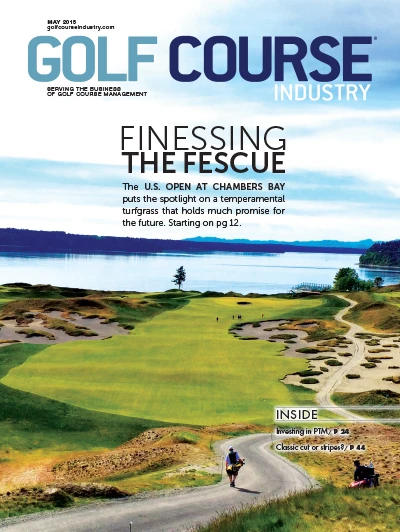 Guy Cipriano Guy CiprianoAssistant Editor |
A new location for a 115-year-old event leads us to a superintendent of a neighboring course who introduces us to a former Ryder Cup participant. A memorable lunch ensues. Ken Still begins the conversation by telling a visitor his time costs “a dollar a minute.” Fircrest Golf Club superintendent John Alexander knows what awaits and he grins, quickly making the visitor who traveled 2,400 miles comfortable. Fircrest, which opened in 1923, is four miles from Chambers Bay, the eight-year-old course that will become the first Pacific Northwest venue to host a U.S. Open. The Western Washington courses might as well be separated by 5,400 miles. Chambers Bay is a links course that can stretch to 7,600 yards. Fine fescue covers the playing surfaces. Fircrest’s fairways and greens are a combination of bentgrass and Poa annua and towering Douglas fir trees line the 6,600-yard course where Still learned the game as a caddie. “The greens are much, much better now,” Still says. “I’m trying to toot John’s horn.” Alexander grins again, displaying the humble side superintendents possess. When you work for a publication covering the blue-collar aspects of the industry, you try to avoid overhyping the glitz of professional golf. Yet there’s something different about a conversation with the 80-year-old Still, who bumped Arnold Palmer from the 1969 Ryder Cup team. Still says people in his region “don’t understand the impact” of hosting a U.S. Open. The irony is Chambers Bay looks nothing like its neighbors. Our Pacific Northwest tour also included stops at Washington National Golf Club, The Golf Club at Newcastle, Inglewood Golf Club and Aldarra Golf Club. We didn’t see one turfgrass stand or hole that remotely resembles anything at Chambers Bay. “I hope people don’t have the impression that all of our courses are like Chambers Bay,” Still says. “It’s the only links course in the area, other than that one down in Bandon (Ore.).” Before anybody considered building courses like Bandon Dunes and Chambers Bay, Still won three PGA Tour events. “When I got on Tour, hell, the grass … Golf courses were horse manure,” Still says. Alexander politely interrupts. “Well, I would add to that Mr. Still, the whole study of turfgrass science. In those days, there were probably some guys who were amazing at what they did, but it’s just like anything else,” Alexander says. “Is an automobile better now than it was in the 1950?” This is a clubhouse conversation you never want to end. But the skies are clear and there’s a golf course to tour. Plus, the bill for Still’s time is creeping past $60.
|

Explore the May 2015 Issue
Check out more from this issue and find your next story to read.
Latest from Golf Course Industry
- Editor’s notebook: Green Start Academy 2024
- USGA focuses on inclusion, sustainability in 2024
- Greens with Envy 65: Carolina on our mind
- Five Iron Golf expands into Minnesota
- Global sports group 54 invests in Turfgrass
- Hawaii's Mauna Kea Golf Course announces reopening
- Georgia GCSA honors superintendent of the year
- Reel Turf Techs: Alex Tessman





